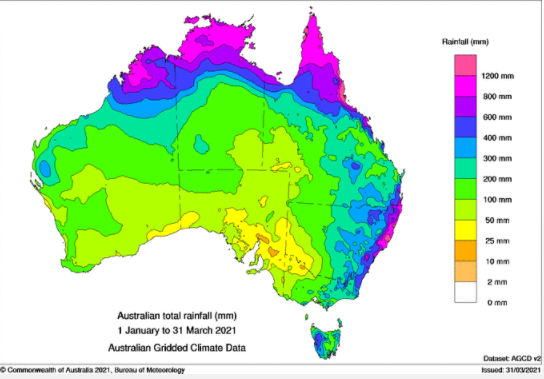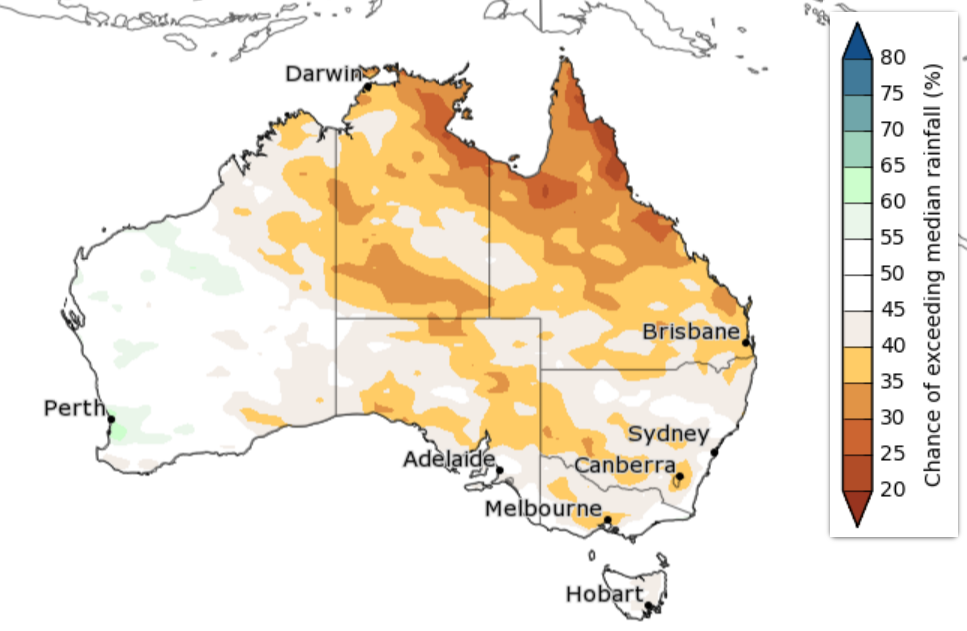



Australia's Bureau of Meteorology forecasts dry period ahead
Australia experienced a range of different weather extremes recently, however drier conditions are expected longer-term.
Key points:
- The La Niña has officially ended
- Eastern Australia to be drier than usual between May and July
- WA was lashed by two cyclones this week, bringing rains of close to 100mm to a number of agricultural areas.
Cyclone Sejora and Cyclone Odette battered WA, bringing widespread rain to Western Australian agricultural regions. At the same time, the east coast was hit by an Antarctic blast that saw the mercury plummet and brought the year’s first snow falls to NSW, Victoria and Tasmania.
So, what will be the effect of this week's weather?
In WA’s mid-west and northern wheatbelt, a lot of farm infrastructure was damaged by cyclone Seroja’s high winds. The rebuild for farmers in this region will be long and costly, and will likely create a delay in their 2021 cropping season. Being the second large deluge for the state this autumn, there are good levels of soil moisture and confidence that 2021 will be a good season with an abundance of pasture.
The cold temperatures in the east are likely to lift and are unlikely to impact pasture growth.
The longer-term outlook
Last week, the Bureau of Meteorology (BOM) updated its long range forecast for the next three months, painting a less positive picture than those from earlier in the year – with BOM now indicating that the La Niña has officially ended. Large parts of eastern Australia are expected to experience below-average rainfall from May through to July.
La Niña rains in late March were welcomed in northern Australia with falls in Queensland buoying cattle prices. However, it remains to be seen how the latest BOM outlook will affect cattle prices as producers weigh up their options coming into winter.
To date, northern Australia has had a slightly wetter-than-average summer. However, follow-up rains in northern Australia are needed in late April for pasture growth before the region enters the dry season.
Down south, the predictions of a drier winter may affect cropping programs and sheep/lamb numbers in the short-term. In recent years of improved seasonal conditions, farmers have increased their cropping acreage in some regions, moving away from breeding sheep to trading them, to utilise solid stubbles. If producers reduce their cropping program on the back of the BOM update, they may retain more lambs and sheep.
For both sheep and cattle producers, the latest forecast is likely to be front of mind, and may sway intentions to rebuild herd and flock numbers.

BOM Three Month Outlook: May to July 2021

TheCattleSite News Desk


